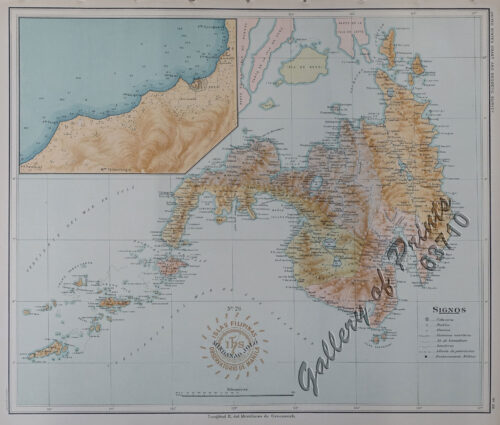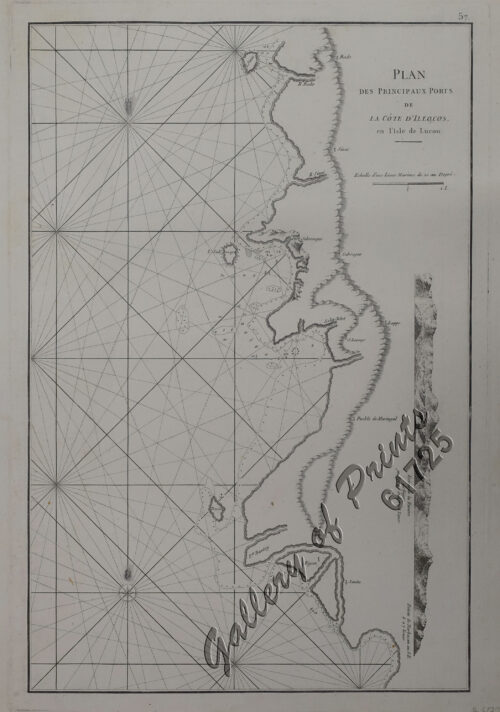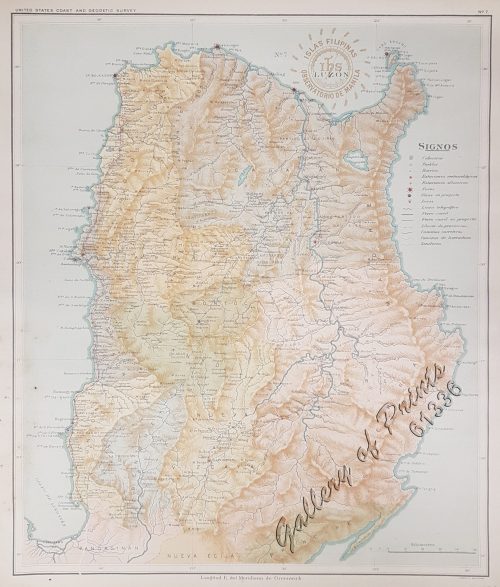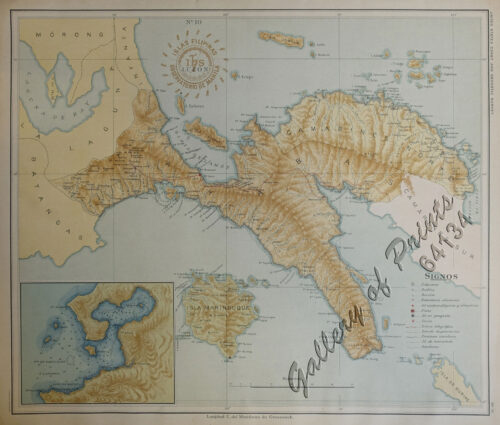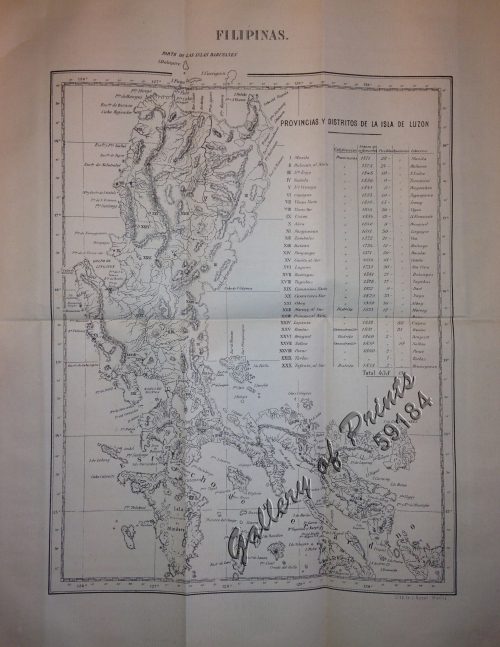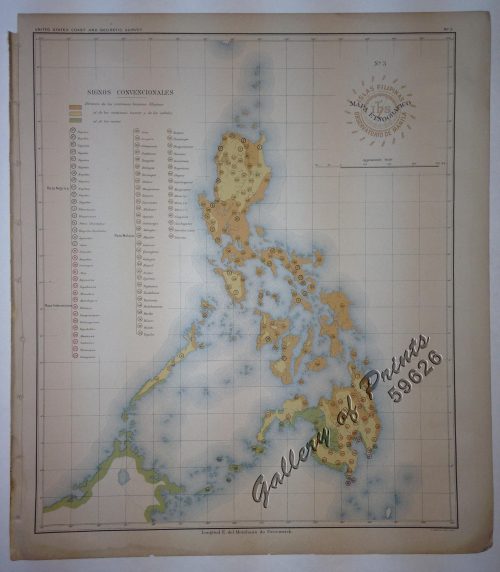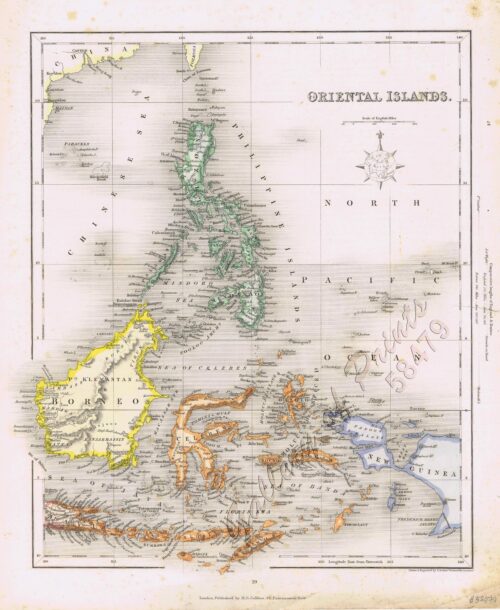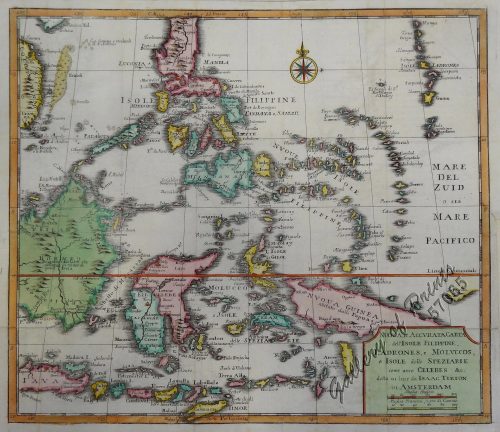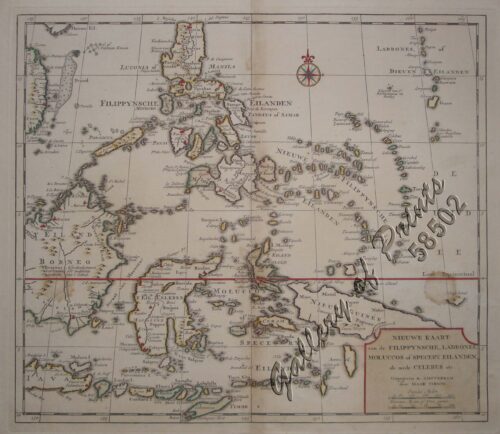Iaponia [Japan]
₱456,000.00
In Stock
In Stock
Description
EXTREMELY RARE copper engraving in exceptionally pristine condition. No individually sold copy could be traced in recorded map sales worldwide except for one sold within the last few years. To our knowledge, this then is only the second.
Extremely rare map and almost impossible to find on its own as it forms part of the 14-volume set of Juan de la Concepcion’s ‘Historia General de Philipinas’ (Manila, 1788-1792), This set includes 10 maps engraved by Cipriano Bagay – the son of Nicolas de la Cruz Bagay – and Felipe de Sevilla, native Filipino (Tagalog) engravers / publishers. The map appeared in volume 2, between pp. 223/224 – an impressive colonial cartographic engraving, which is generally found in bad condition. There were probably only about two dozen maps
published in the Philippines in the 18th Century, which showed these native Philippine engravers at the prime of their skills and established the Philippines as a major centre of colonial engraving and – through this 14-volume epos – also of publishing, in the 18th Century.
It is the only map of Japan created by a Filipino engraver before 1900.
Only 6 sets of this work have been offered for sale in recorded book selling history: only two recorded over almost 100 years till 2017, and then one complete set each to the Gallery of Prints and at Leon Auctions over the last 7 years.
“While the islands of Honshu, Kyushu and Shikoku are easily identifiable (Hokkaido is totally absent), their form is somewhat crude and the placement of cities within the country is far from precise. ‘Meaco’, the archaic name for Kyoto appears prominently, but far to the northwest of its true position, while ‘Iedo’ (later Tokyo), the headquarters of the ruling Tokugawa Shogunate, appears inland of its true position. The east coast of Korea is shown in vague outline, as Bagay is not drawn into the question as to the peninsularity of Korea… Other archaic names include Shikoku, which appears as ‘Tokoesi’, and confusingly Kyushu is named ‘Cikoko’, indicated that the 17th Century Europeans misunderstood the real name of Kyushu, confusing it with the name for Shikoku. This stems from the fact that the archaic Japanese name for Kyushu was “Tsukushi”, which sounds something like Tokoesi’.”[Ruderman]
The complete description of the 14-volume Philippine History follows:
Historia General de Philipinas : Conquistas Espirituales y Temporales de estos Españoles Dominios, Establecimientos, Progresos y Decadencias. [General History of the Philippines: Spiritual and Temporal Conquests of these Spanish Domains, Establishments, Progress, and Declines [including] the Imperial Kingdoms of the Provinces of the Islands and the Adjoining Continents with which It Had Communication and Commerce through Coincidental Occurrence. With Geographical, Hydrographical [Data on] Natural History, Politics, Customs, and Religions, Topics of Universal Interest.] Manila : Imp. del Seminario, Conciliar y Real de S. Carlos, por Agustín de la Rosa y Balagtas, 1788-1792. 14 volumes with 10 copper engraved maps.
The 14 volumes were published between 1788 and 1792 by the Recollect friar, Father Juan de la Concepción. For all its sprawl of detail and sometimes unnecessary excursi, it remains the single source of veritable troves of historical information from Spanish conquest till late 18th century. Already in its time it was considered the most ambitious and salient History of the Philippines, overflowing with clerical reports and other relaciones of the friars. Such was the span of its work that the author died before their printing. Volumes VI to XIV were printed in El Conv. de Ntra. Sra. D. Loreto del Pueblo de Sampaloc: por el Hermano Balthazar Mariano, Donado Franciscano. (see Retana, no. 401). Each volume features a title page embellished with border designs. Chapters end with rosettes or decorative florettes, while a table of contents, an index, and a list of typographical errors, if necessary, closes each volume.
Condition
in exceptionally pristine condition.


